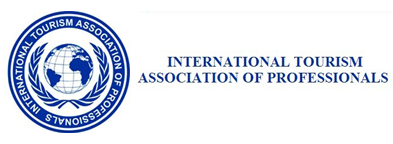The Way of Saint James
The first pilgrims, in the XI century, only came from the interior of the kingdoms of Galicia and Asturias. However, with surprising speed, Compostela began to attract travellers and pilgrims from other Christian kingdoms, including those from beyond our own frontiers. The first, whose name we know, Godescalco, Bishop of Le Puy, was French, and arrived in Compostela in 951. The influx of pilgrims then began to grow forcefully and, before the century was over, it was deemed necessary to supply accommodation for them. This began to take place in the monasteries such as San Martín de Albelda, San Millán de la Cogolla, San Juan de la Peña, Samos, Sobrado...
There are many reasons and motives given by historians for the fever felt by the Franks to cross the Pyrenees. For some, it was for political motives. The Papacy and Cluny were decided, for reasons of their own safety, in supporting the kingdoms in the north of Spain, thus making a Muslim invasion a more remote possibility. Others came out of curiosity and the lust for adventure. On many occasions the reasons were based on commercial interests or for making cultural exchanges. And sometimes, also, the zeal for robbing and taking advantage of the helpless pilgrims. There is no doubt, nonetheless, that in nearly all cases the underlying reason was religious. In the Middle Ages the pilgrimage was a symbol of the life of Christ, an unsafe path towards the eternal home.
The knights of the XV century came to take part in tournaments and discover new lands, although always doing so with the customary gallantry. It was not only the Frankish people who came. Italians such as Giordano de Ribalta boasted of having been three times in Rome and four in Santiago. Jean van Eyck, the Dutch painter portrayed his Annunciation on the inside of the cathedral. The Englishman John Goodyear donated a precious alabaster to the Compostela treasury. And those four boats full of Germans who set off from the port of Hamburg to make an unconventional Road to Santiago by sea. All of these people came before the end of the XV century, and all of them to worship the relics of Christ’s disciple and to give the ritual embrace to the Apostle.
One of the most famous and well-known medieval pilgrims in Compostela was the Frenchman Aymery Picaud, a monk from the French town of Poitou. His fame comes from having written a chronicle of his journey, around 1130, in precise details, with an endless list of advice and recommendations for other walkers. This chronicle, entitled “Guide for the Pilgrim to Santiago de Compostela”, is included within one of the most beautiful documents preserved in the Compostela cathedral library: The Codex Calixtinus. This Guide to the Pilgrim is an obligatory reference book whenever talking of the old French Road.
The Guide to the Road to Santiago, by Aymery Picaud, states with a typical French clarity: “There are four routes to Santiago which join into one at Puente la Reina, in Spanish territory, and from there only one road leads to Santiago”. The first one left from Arles, close to Marseilles, the only one crossing the Pyrenees via Somport. The other three left from Paris, Vézélay and Le Puy, which entered Navarra at Roncesvalles. These were the traditional routes taken intermittently by the pilgrims to Compostela.
Good footwear, short clothing and shoulder cape, a stick for support and defence, a gourd for water and wine, a small pouch and a wide-brimmed hat. All these features made up the typical appearance of the pilgrim from the Middle Ages. The “vieira” or scallop shell that was already a feature of the walkers in pagan mythology was the most important souvenir that the pilgrims brought with them from Galicia, this mollusc being abundant along the coastline. The hat, pouch and gourd would later be added to the image, becoming an emblem and safeguard of the pilgrim. There was a district in Santiago called Concheiros, the name still in existence today. It was the spot where the scallop shells were sold, or imitations in metal, with a sales monopoly granted by the Archbishop and ratified by the Popes.
Once it was for the fulfilment of a vow, or to free oneself of a penitence, to fulfil the desire of a deceased relative, or even by judicial order as a punishment. Today it is more common to take the Road in order to relive our past, discover our culture and history, admire the harmony of Romanesque art and architecture, or simply to have the pleasure of taking in the landscapes offered by the Land of Santiago.
In the past, on leaving Compostela to return home, the pilgrim would offer their clothing, with all their travelling equipment, to a sanctuary, or they would keep them, and wear them on processions they attended in their home towns and countries. Today’s pilgrims return with an album of photos, a scallop shell, a silver censer and, above all, an unforgettable memory of all they have seen and experienced along the Road to Santiago.


